10.10.2022
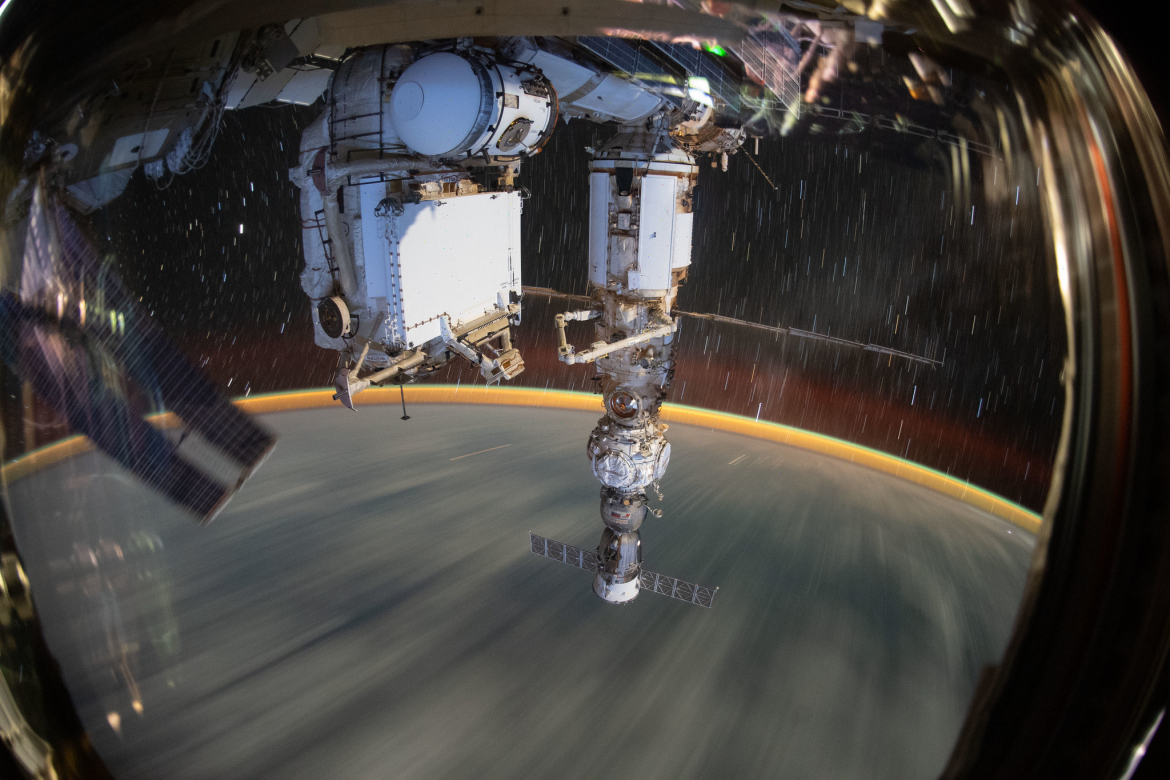
September saw the end of Expedition 67 aboard the International Space Station (ISS) and the handover to Expedition 68. While the expedition number has changed and crew rotation is underway, this has not changed the significance of the work performed by astronauts and cosmonauts aboard the orbiting outpost.
At the start of the month, the Station was crewed by Expedition 67, under the command of Russian cosmonaut Oleg Artemyev. He was joined by compatriots Denis Matveev and Sergey Korsakov, NASA astronauts Kjell Lindgren, Bob Hines, and Jessica Watkins, and European Space Agency (ESA) astronaut Samantha Cristoforetti.
The Russian crewmembers arrived aboard Soyuz MS-21 in March, with that spacecraft remaining docked at the nadir, or Earth-facing, port of the Prichal docking module. The US and ESA astronauts arrived in April aboard Crew Dragon Freedom, flying the Crew-4 mission. Freedom has since remained docked at the International Docking Adaptor – Zenith (IDA-Z) port on the zenith, or Earth-opposed, side of the Harmony module.
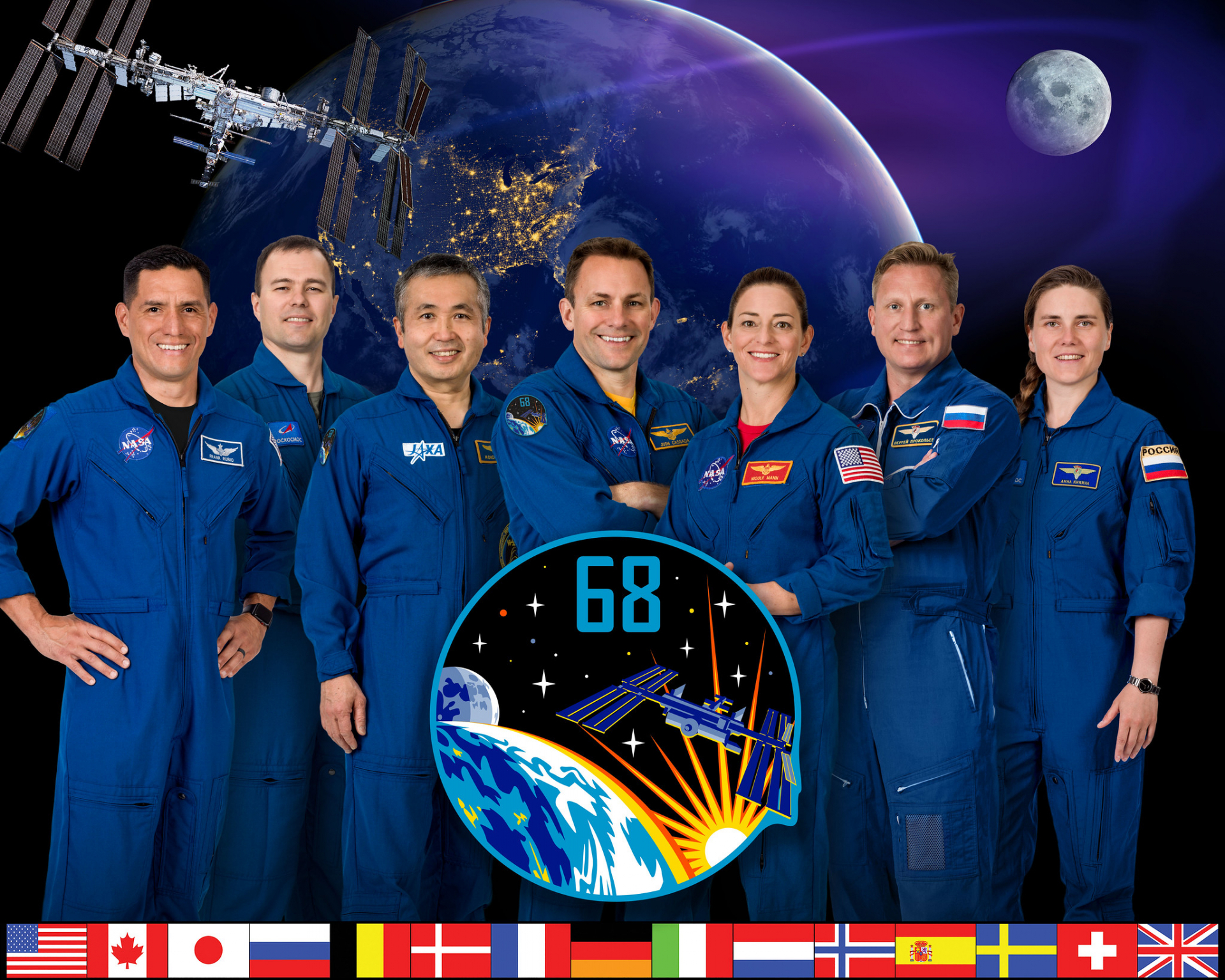
Two uncrewed cargo spacecraft were also present at the Station, with both remaining docked there throughout September. Progress MS-19 has been docked to the zenith port of the Poisk airlock module since February, while Progress MS-20 arrived at the aft port of the Zvezda module in June. On Sept. 15, Progress MS-20 was used to reboost the ISS’s orbit, beginning a 118.6-second engine burn at 18:10 UTC. This increased the Station’s velocity by 0.22 meters per second, raising its orbital altitude by 0.41 kilometers.
The only significant comings and goings of spacecraft during September concerned the Russian crew rotation which marked the transition from Expedition 67 to Expedition 68. Soyuz MS-22 lifted off from the Baikonur Cosmodrome at 13:54 UTC on Sept. 21, docking with the nadir port of the Rassvet module a little over three hours later. Onboard were cosmonauts Sergey Prokopyev and Dmitry Petelin, joined by NASA’s Francisco Rubio.
For the next week, the crew complement of the ISS temporarily increased to 10, as the newcomers familiarized themselves with the Station and the departing Russian crewmembers began handing over their responsibilities. On Sept. 29, Artemyev, Matveev, and Korsakov departed the ISS aboard Soyuz MS-21, returning to Earth for a safe landing on the Steppe of Kazakhstan.
Soyuz MS-21 leaving the Station marked the formal end of Expedition 67 and the start of Expedition 68. With Artemyev’s return to Earth, Samantha Cristoforetti assumed command of the Station — although she too is due to return to Earth in mid-October when the next phase of the crew rotation takes place.
Spacewalks and Small Satellites
A Russian spacewalk took place on Sept. 2, aimed at completing work from an aborted spacewalk in August. The extra-vehicular activity (EVA) saw cosmonauts Oleg Artemyev and Denis Matveev venture back outside the Station, a little over a fortnight after spacesuit power issues had forced them to cut their previous attempt short.
Designated VKD-54a — VKD being the abbreviated Russian term for EVA — the spacewalk began with the opening of the Poisk airlock hatch at 13:25 UTC and lasted seven hours and 47 minutes. This was the latest in a series of spacewalks performed on the Russian Orbital Segment to prepare the European Robotic Arm (ERA) for use following its arrival with the Nauka module last year.
While outside, the cosmonauts relocated an external control panel – the External Man-Machine Interface (EMMI) – and installed additional handrails. They then supported testing of the arm, carrying out an inspection and removing launch restraints to allow the arm to move to a different base point. The cosmonauts also carried out work on one of the Poisk module’s Strela cranes to prepare it for use in a future spacewalk.
The start of the month also saw five small satellites deployed from the Station as part of NASA’s Educational Launch of Nanosatellites 45 (ELaNa-45) mission. ELaNa is part of NASA’s CubeSat Launch Initiative, which sees the agency arrange for small satellites built to the CubeSat standard to be deployed into orbit on behalf of various types of educational, research, and non-profit organizations.
CubeSats are built to a standard form factor made up of a number of units – each unit being a cube with edges of 10 centimeters. A three-unit (3U) CubeSat, for example, is three units long with overall dimensions of 30 by 10 by 10 cm. A six-unit CubeSat can be either six units long and one unit wide or – more commonly – three long and two wide.
ELaNa-45’s CubeSats arrived at the ISS aboard the cargo version of SpaceX’s Dragon spacecraft as part of the CRS-25 resupply mission, launched in July. The deployments took place on Sept. 6, using the Nanoracks CubeSat Deployer (NRCSD) mounted on the robotic arm of the Japanese Experiment Module (JEM). The first three satellites were released at 09:10 UTC, while the remaining two followed ten minutes later.
The five satellites deployed under ELaNa-45 represented five educational institutions across four different states. Capacitor Satellite (CapSat-1) is a single-unit satellite being flown for the Weiss School of Palm Beach Gardens in Florida. It will study the performance and discharge of capacitors in space to assess their viability as the basis for a power storage system on future missions.
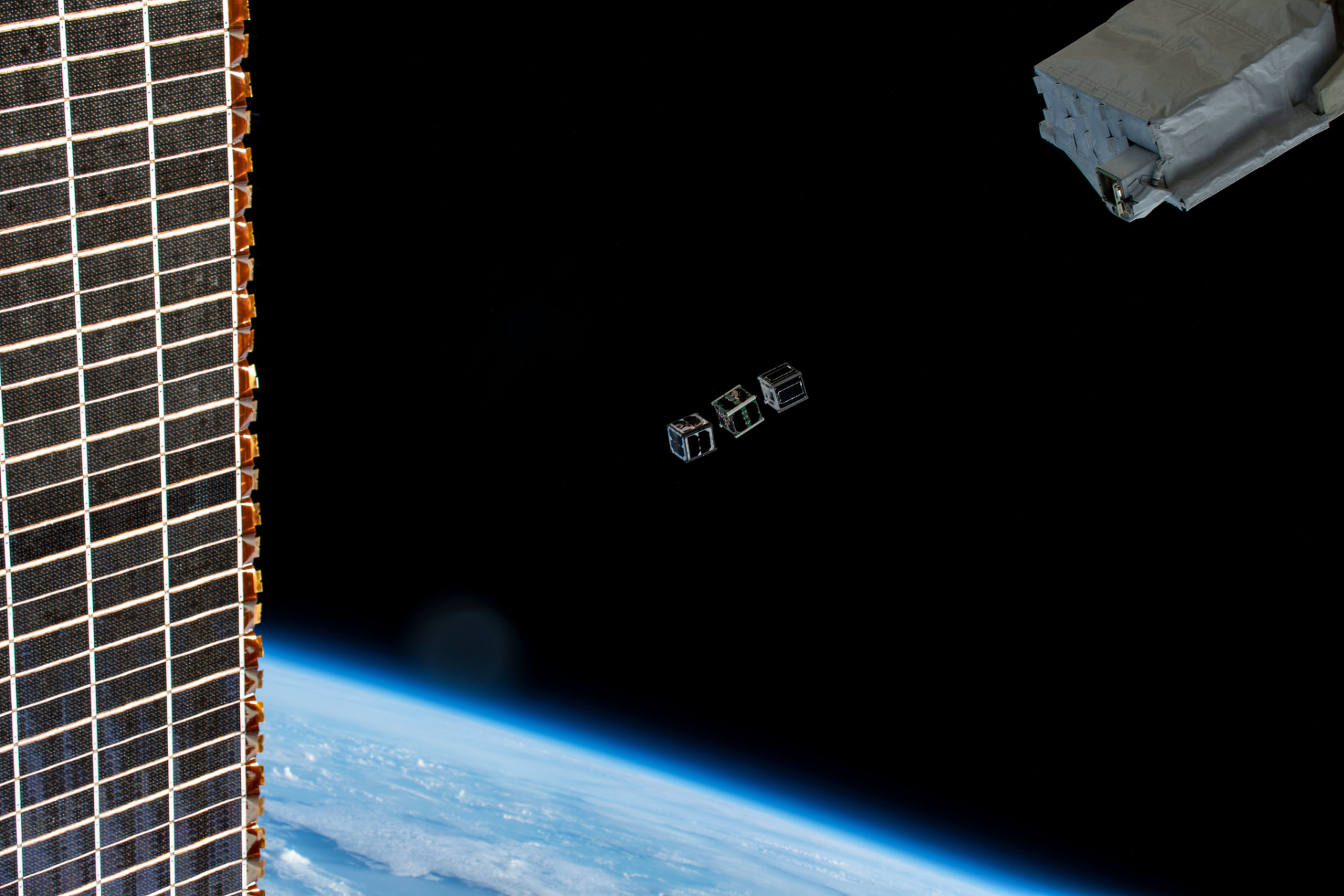
The Drag De-orbit Device (D3) was built by the University of Florida. It is a two-unit CubeSat equipped with four deployable booms, which can be steered to adjust the satellite’s drag profile. The mission’s objective is to demonstrate whether these can be used to guide the satellite to a precise re-entry as its orbit decays. The University of South Alabama’s JAGSAT-1, another two-unit satellite, will measure plasma electron densities in the ionosphere.
The last two CubeSats to be deployed were BeaverCube and CLICK-A. BeaverCube, a three-unit CubeSat built by the Massachusetts Institute of Technology, carries visible-light and long-wave infrared cameras to study the color and temperature of Earth’s ocean surfaces and the temperatures at the tops of clouds. The data it gathers will help to support climate and meteorological research. BeaverCube will also test an experimental ion propulsion system, TILE 2, developed by Accion Systems.
The Massachusetts Institute of Technology’s satellite, CLICK-A, is a pathfinder for the CubeSat Laser Infrared Crosslink project which aims to test infrared optical communications between spacecraft in orbit. CLICK-A is a three-unit CubeSat that will test the laser and pointing systems in orbit before a follow-on twin-satellite mission attempts to demonstrate inter-satellite communications.
Satellites deployed from the International Space Station are typically designed for short-duration missions and decay quickly from their low orbits, ensuring that they do not contribute significantly to the problem of space debris. CubeSats and NASA’s ELaNa program provide institutions with a relatively low-cost way to carry out experiments in space, contributing to a growth in scientific or technological knowledge — or simply giving students experience in designing, building, and conducting satellite missions.
Station Life, Science, and Operations
Aboard the ISS, the expedition crewmembers are responsible for conducting research, carrying out inspections, performing repairs, and all of the other tasks that cannot be completed from the ground that are essential to the operation of the outpost.
One of the crew’s first tasks for September was a routine monthly inspection of Treadmill 2, a vital piece of exercise equipment used by the crew to maintain their physical condition while in microgravity. The first few days of the month also saw work to install the Life Support Rack (LSR) in the Tranquility module. LSR is designed to recover oxygen from carbon dioxide exhaled by the crew and will be operated onboard the ISS for at least a year to demonstrate the technology for future long-duration missions.
Dozens of scientific experiments are in progress aboard the Station at any time. Many can run with little or no intervention from the crew, however, the astronauts may be tasked to troubleshoot equipment if it does not behave as expected. Early in the month, astronauts were tasked with replacing a print tray on the Manufacturing Device (ManD). ManD is a technology demonstration payload, testing the use of a 3D printer to produce equipment for use aboard the ISS.
Throughout the month, the crew tended to the eXposed Root On-Orbit Test System (XROOTS) experiment, which attempts to grow plants in space using hydroponics and aeroponics. The astronauts periodically checked on the health of the plants and topped up the nutrient solution that was being used to grow them. Around the middle of the month, the plants were harvested, ending the third growth cycle for the experiment. New seed cartridges were installed to begin the next stage of the experiment.
In the second half of the month, the crew worked on the Autonomous Systems and Operations EXPRESS 2.5 (AMO EXPRESS) investigation, installed in an EXPRESS rack inside the Destiny module. AMO EXPRESS aims to test software that can help the crew make decisions and automate processes to manage systems aboard the Station. It is seen as a pathfinder for future deep space missions, where communications delays would make waiting for advice or assistance from controllers on Earth less practical.

Samantha Cristoforetti working with the Microgravity Science Glovebox. (Credit: NASA)
In late September, the astronauts prepared the Universal Intelligent Glass Optics (UNIGLO) experiment for another series of test runs. UNIGLO attempts to produce glass fibers in microgravity while using artificial intelligence to help it adapt to the conditions of the Station. The crew repaired some of the preforms – the rods of raw material to be spun into fibers – and installed UNIGLO in the Microgravity Science Glovebox. With this installed, experiment runs were conducted on Sept. 29 and 30, with the crew installing preforms as needed.
Throughout the month, but particularly towards the end, the Crew 4 astronauts carried out preparations for their return to Earth following the arrival of their replacements. Activities included a refresher on emergency procedures aboard the Dragon spacecraft, training for the undocking and deorbit stages of flight, and a review of rendezvous procedures to prepare for Crew 5’s arrival. On Sept. 30, the crew put on their spacesuits for a checkout to ensure they are in proper working order. Meanwhile, ground controllers inspected Crew Dragon Freedom using the Station’s robotic arm.
Looking ahead, October will see the Station’s crew rotation completed, beginning with the launch and docking of Crew Dragon Endurance flying the Crew 5 mission. Crew 5’s astronauts are in for a five-month stay aboard the orbiting laboratory, while their arrival paves the way for Freedom to return to Earth. Its departure is expected to occur on Oct. 12 following a week-long transition. While the crew aboard the ISS will change, the vital scientific and technological research conducted aboard the Station will continue unabated.
Quelle: NS
----
Update: 14.10.2022
.
NASA, SpaceX set for astronauts' Friday splashdown off Florida coast
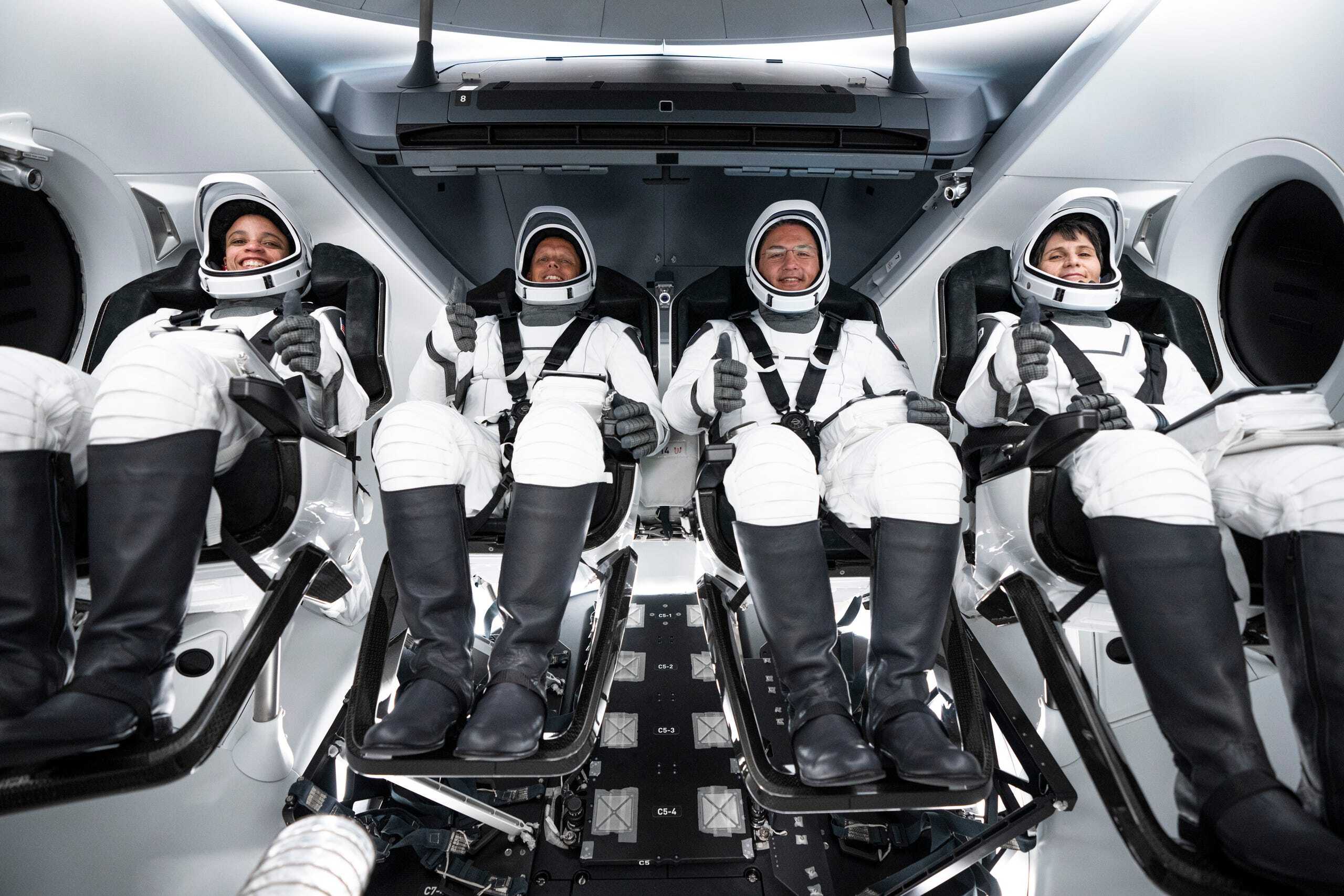
Update (Thursday): NASA is now targeting no earlier than Friday, Oct. 14, for the undocking and splashdown of Crew-4 from the International Space Station due to high winds in several zones around Florida. If mission managers give the "go," Crew Dragon's undocking from the ISS will happen at 11:35 a.m. EDT. Splashdown would occur around 4:50 p.m. EDT.
---
A team of astronauts that launched from Florida several months ago is slated to return to Earth this week, bringing an end to their six-month science mission on the International Space Station.
At-sea conditions permitting, NASA's Bob Hines, Kjell Lindgren, Jessica Watkins, and the European Space Agency's Samantha Cristoforetti are set to depart the ISS in their SpaceX Crew Dragon capsule at 10:05 a.m. EDT Thursday, Oct. 13. That would set them on course for splashdown at 5:43 p.m. the same day.
Though NASA would prefer splashdowns off the coast of Cape Canaveral due to the proximity to Kennedy Space Center, the agency can choose from up to seven zones around Florida depending on weather. That decision will be made six hours before undocking from the ISS and can include: Cape Canaveral, Daytona Beach, Jacksonville, Tampa, Tallahassee, Panama City, and Pensacola.
The team of Crew-4 astronauts launched to the ISS from KSC on April 27. After splashdown and medical checkouts, the NASA astronauts will be flown to their home base in Houston, Texas, while ESA's Cristoforetti will fly directly to Europe.
Thursday's splashdown completes a nearly six-month tour on the ISS, where Crew-4 spent thousands of hours completing science experiments, maintaining the station, and exercising to ward off the effects of microgravity.
"We're immensely grateful to all the people who were a part of this journey," Lindgren, mission commander, said from the ISS during a teleconference with reporters on Tuesday. "I think we had a great experience up here, got a lot of good work done, and we're excited to get home."
Crew-4's departure makes room on the ISS for Crew-5, which launched from KSC on Oct. 5. That includes NASA's Josh Cassada and Nicole Mann, Japan's Koichi Wakata, and Russia's Anna Kikina.
At Cape Canaveral Space Force Station, meanwhile, SpaceX is targeting Friday night for its next launch of the Hotbird-F1 commercial communications satellite for Eutelsat. The window to fly from Launch Complex 40 opens at 11:26 p.m. and closes at 1:22 a.m. EDT Saturday, Oct. 15. The mission will include a drone ship landing.
Quelle: Florida Today
+++
Crew-4 Astronauts Return to Earth After Six Months in Space
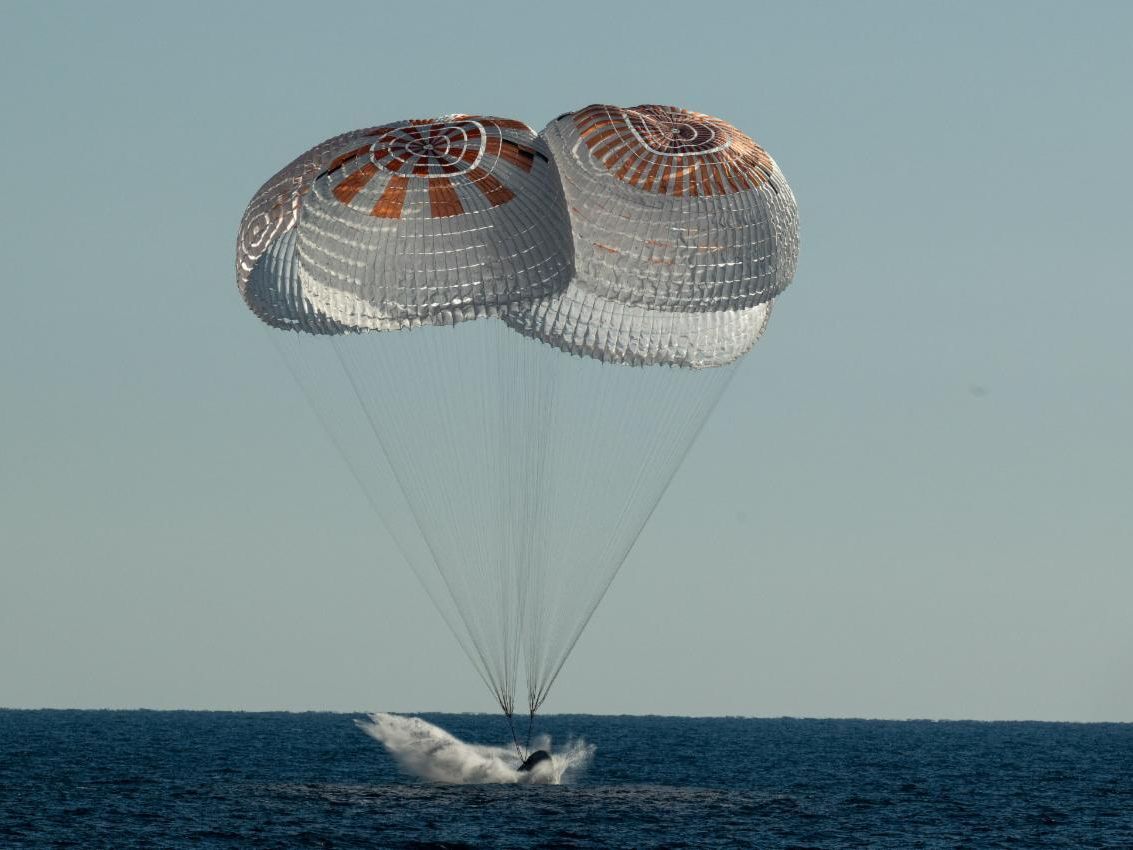
Quelle: NASA
